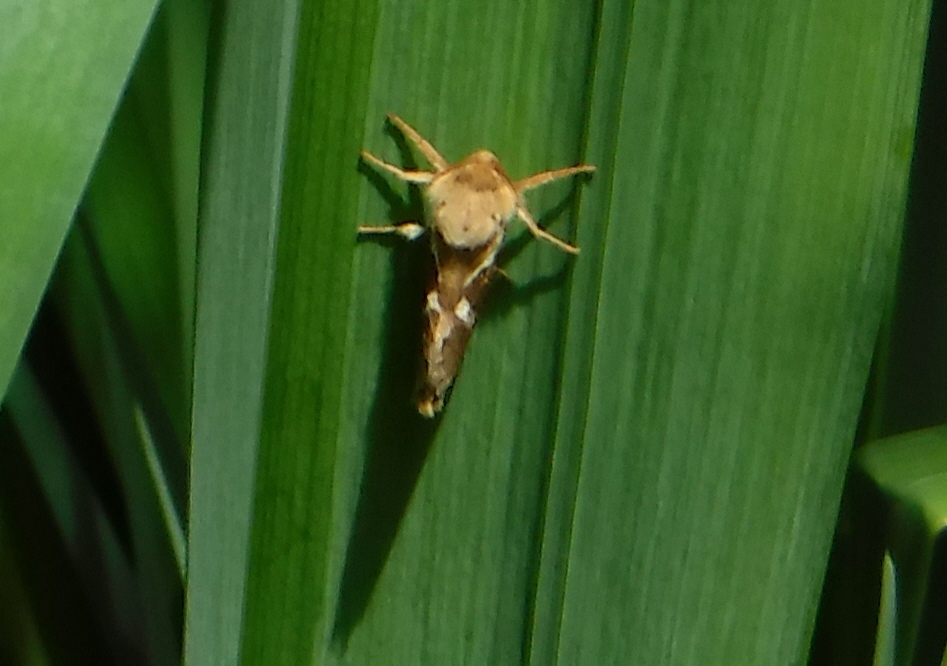
Total monthly rainfall: 102 millimetres. Maximum daily rainfall: 28.5 millimetres (10th June).
June was a month of much-needed rainfall, with measurable rain falling on 10 days of the year sufficient to top-up pond-water levels by some ten centimetres. There were 16 days with complete cloud cover for at least part of the day.
Maximum temperature on the warmest day was 30°C on 29th June, while maximum temperature on the coldest day was 12°C on June 19th, and there were fresh-to-strong winds on June 6th-8th, 13th-15th, and 26th-28th – often leading to the downing of twigs and green leaves from some trees.
With 21 wildflower species coming into flower during the month, we have now reached 54 for the year. White clover appeared in the fields on the 2nd, interspersed with red clover, and marsh bedstraw around the lake on the 4th. Tufted vetch and petty spurge bloomed on the 9th, and a week later meadow vetchling and creeping cinquefoil flowered on the 16th.There then followed a succession of flowering plants, including self-heal on the 19th; marsh woundwort and tall mellilot on the 20th; dark mullein, agrimony, yarrow, and water plantain on the 21st; hedge bindweed on the 22nd; hedge woundwort, rough hawkbit, and marsh willowherb on the 23rd; field bindweed and nipplewort on the 24th; water figwort on the 25th, and finally, knapweed on the 27th.
https://www.kentfieldclub.org.uk/news/little-barton-farm-wildlife-notes/june-2019#sigProIdc41c07fcc5
This month, seven new species of butterfly made their first appearance of the year, bringing our species-count to 21 so far. On the 3rd we spotted both the meadow brown and small heath among meadow grasses –this being our very first known sighting ever for the latter. A painted lady, the first of three, arrived here on the 9th June, and all three spent a large part of their time thereafter nectaring on our garden hebe bush. On the 24th, the first small skipper appeared in our front meadow, followed by a belated large white the following day, when we also saw two pristine white admirals on an alder buckthorn in our woodland ride. The 27th produced a marbled white in the same meadow as the small skipper three days before.
It was also a much better month for moths, with 9 species putting in an appearance. The month began with sightings of a silver Y and brown china-mark moth – both beside the lake on the 1st, and a common swift moth on the 2nd. The white china-mark appeared in similar habitat on the 11th. On the 12th we saw two yellow shell moths in the wood, and also a large yellow underwing among grass near a woodland pond. A common white wave moth appeared on the 19th, flying underneath a hazel shrub in our woodland ride, before we found a brimstone moth on a garden rose later the same day. Our last moth of the month was a white plume moth among garden flowers, including sweet-pea plants. There was one more moth of interest, however, and that was a lackey moth indoors on a tiled floor on the 25th June . It does not count as an additional species because we have already seen its caterpillar during May.
Our final sightings for the month consisted of three dragonfly and one crane-fly species. On June 1st we spotted our first emperor dragonfly of the year patrolling the western end of the lake. Next day, on the 2nd, we found a black-tailed skimmer guarding its territory between two four-spotted chasers; and finally, on the 18th, we discovered a banded demoiselle among rushes close by the emperor’s patch. We now have 11 dragonfly species for the year so far.
The crane-fly was a tipula lunata, first identified here last year, and first seen this year among rushes on the 15th.


